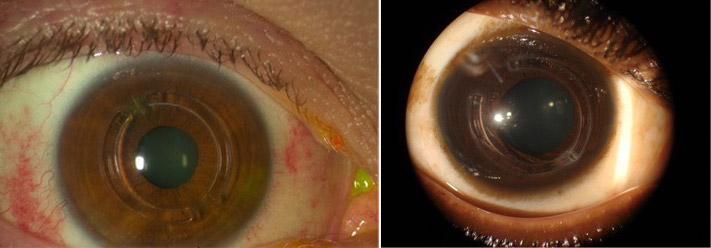There are times when the inside layers of the cornea become weak. This may change the shape of the cornea by protruding forward thereby distorting the vision. This can be a result of some complications after the LASIK. If you are amongst those who is experiencing post-LASIK Ectasia, you stand a chance to cure it, as there are new ways now available that can help you get rid of it. But, it is important that you know, that Corneal Ectasia can even lead to permanent loss of the vision if proper treatment is not given at the right time.
Ectasia is not common, and the latest advancements in technology have minimized it to a great extent, but the experts are yet not sure about the number of people who may or are at the risk of suffering from Corneal Ectasia due to complications in LASIK.
Causes:
The surgeons say that main cause of post-LASIK Corneal Ectasia is the removal of too much of Corneal tissue at the time of LASIK Surgery. As a result, the remaining corneal bed becomes too thin, which in turn weakens the cornea and makes it protrude outside thereby distorting the vision.
Symptoms:
- Progressive Myopia
- Blurred Vision
- Inability to correct to 20/20 vision sight.
Risks:
- The unusual shape of the cornea: Even if the corneal thickness is perfect, there is a potential risk of a person suffering from Corneal Ectasia. For this reason, the surgeons measure the corneal curvature by a test known as corneal topography.
- Acute Myopia: If you have acute nearsightedness, you are more prone to suffering from Corneal Ectasia after LASIK. The reason behind this is, more tissues will be removed from the central portion of the cornea to rectify the refractive error.
- A disparity in Corneal Thickness: If the central portion of the right eye’s cornea does not match with the central portion of the left eye cornea, you are at a greater risk of suffering from corneal ectasia.
Treatments:
There is no problem in the world that does not have a solution. Same goes with Ectasia. Ectasia can be treated. Corneal Collagen Cross-Linking (CXL) is the latest advancement in the technology that can cure Corneal Ectasia.
Alternatives to LASIK
- Pre-operative tests are done to make sure whether you are suitable for getting a LASIK done. IF the surgeons find that you are not fit for LASIK, as you may suffer from Ectasia, you still have options. Procedures like PRK, LASEK, epi-LASIK can help you a lot when counting the refractive procedures. These procedures offer you with an advantage of less removal of the corneal tissue, so that the remaining bed is thicker, as it would have been with the LASIK.
- Lens based treatments like IOL’s and refractive lens exchange do not remove the corneal tissue.
- Some surgeons offer you a new process that is a combination of PRK and corneal cross-linking. This process leaves the stromal bed thick and keeps the corneal tissue healthier and stronger.

